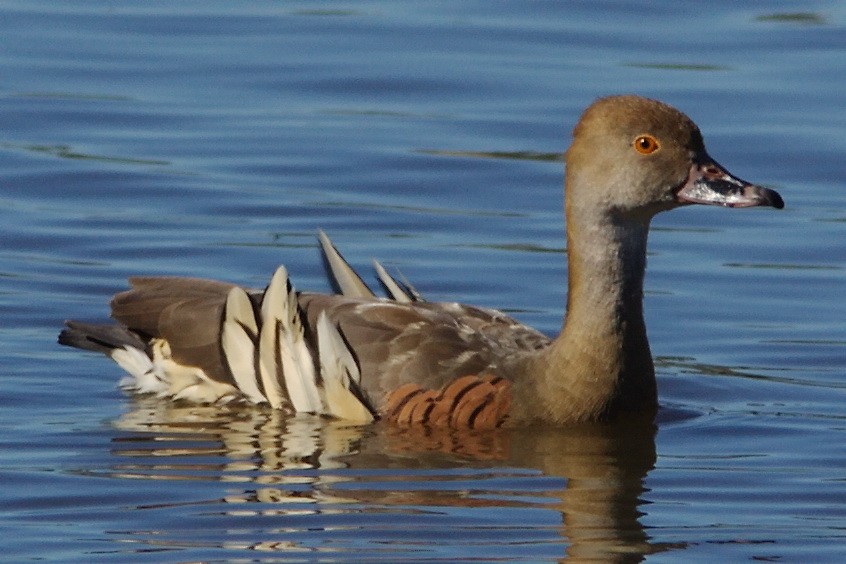Plumed Whistling Duck
A species of Whistling-ducks Scientific name : Dendrocygna eytoni Genus : Whistling-ducks
Plumed Whistling Duck, A species of Whistling-ducks
Botanical name: Dendrocygna eytoni
Genus: Whistling-ducks
Content
Description People often ask General Info
Description
Measuring 42–60 cm (16.5–23.5 in) and weighing around one kilogram (2.2 lb), it is a long-necked duck with brown upperparts, paler underparts and a white rump. The chest is chestnut with thin black bars, while long black-margined plumes arise from its flanks. Its bill and legs are pink, and its iris is yellow. The male and female are similar in appearance. The species has a characteristic lowered neck and short, dark, rounded wings while flying. The call is a characteristic whistle which gives the bird its common name. 
Size
45 cm
Nest Placement
Ground
Feeding Habits
Plumed Whistling Duck, a grassland forager, primarily grazes on grasses and occasionally consumes insects. This species is unique for its terrestrial feeding rather than aquatic hunting.
Habitat
Plumed Whistling Duck predominantly inhabits grassland, savanna, and meadow environments that are interspersed with lagoons, pools, and swamp areas. These birds favor regions that provide a combination of tall grassland vegetation and proximity to bodies of water, reflecting a preference for wetland ecosystems within broader geographical regions that span tropical to temperate zones.
Dite type
Herbivorous
People often ask
General Info
Feeding Habits
Bird food type
Distribution Area
The range is eastern, northern and central Australia from the Kimberley across the Top End and Cape York, down to southern Queensland and northern New South Wales on the east coast, although may reach northwestern Victoria inland, in the vicinity of the Murray River. It is also found in New Guinea. The preferred habitat is tall grassland and savanna, often near bodies of water. 
Species Status
Not globally threatened.
Scientific Classification
Phylum
Chordates Class
Birds Order
Waterfowl Family
Geese Genus
Whistling-ducks Species
Plumed Whistling Duck 